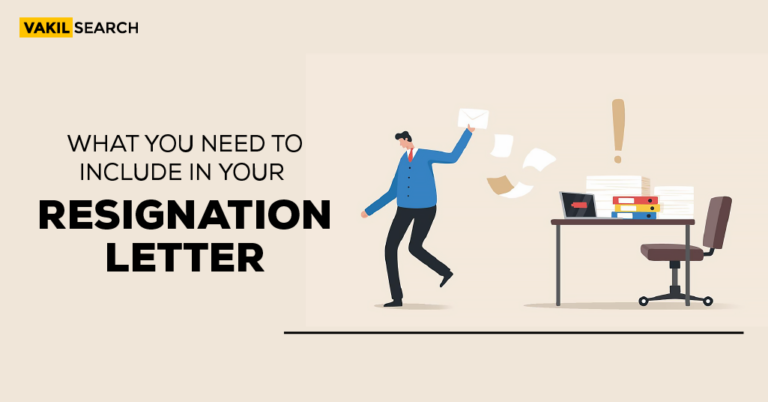This comprehensive blog delves into the intricate process of removing directors by shareholders in a company.
Introduction
In the realm of corporate governance, the relationship between shareholders and directors is fundamental to the success of a company. Shareholders are the owners of the company, holding shares that represent their ownership, while directors are responsible for managing and making critical decisions on behalf of the company. However, there are instances when shareholders may deem it necessary to remove a director from their position. In this blog, we will explore the process of removal directors by shareholders, the reasons for such actions, the required steps, and other essential aspects of this crucial decision.
Who is A Shareholder in a Company?
A shareholder is an individual or entity that holds shares in a company, representing ownership interest. Shareholders can be individuals, institutional investors, or other corporations. The number of shares held by a shareholder determines their proportionate ownership stake in the company, and this ownership entitles them to certain rights, including voting rights, dividends, and a say in major decisions through meetings like the Annual General Meeting (AGM).
Who is A Director in a Company?
Directors are appointed by the shareholders to manage and oversee the operations of the company. They are responsible for formulating strategies, making significant business decisions, and ensuring the company’s compliance with relevant laws and regulations. Directors owe a fiduciary duty to the company, which means they must act in the best interest of the company and its shareholders.
Can Shareholders Remove the Board Of Directors?
Yes, shareholders have the authority to remove a director from the board. This right is essential as it provides a mechanism for shareholders to hold directors accountable for their actions and decisions. However, the removal process must adhere to legal procedures and fulfil specific conditions set forth by corporate laws and regulations.
What are the Reasons For Removal of Directors by Shareholders?
Several reasons can lead shareholders to consider removing a director from the board. Some common grounds for removal include:
Non-performance or Incompetence:
Shareholders may seek removal if a director fails to fulfil their duties, exhibits incompetence, or is unable to contribute meaningfully to the company’s growth and success.
Conflict of Interest:
A director might be removed if they are found to be engaged in activities that create a conflict of interest with the company’s objectives or if they prioritize personal gain over the company’s interests.
Breach of Fiduciary Duty:
Directors are bound by a fiduciary duty to act in the company’s best interests. If a director is found to have breached this duty, shareholders may seek their removal.
Mismanagement or Fraud:
Shareholders may consider removal if there is evidence of mismanagement, financial misconduct, or fraudulent practices by a director.
Loss of Confidence:
In some cases, shareholders may simply lose confidence in a director’s ability to lead the company effectively, leading to their removal.
Steps for Removal of Directors by Shareholders
The process of removing a director by shareholders involves several steps, and adherence to legal procedures is crucial to avoid any legal challenges. The general steps include:
Review Company’s Articles of Association: The Articles of Association (AoA) often outline the procedures for director removal. Shareholders should thoroughly review this document to understand the requirements and procedures involved.
Special Resolution: Generally, a special resolution is required to remove a director. This means that a significant majority of shareholders must vote in favour of the removal, often requiring at least 75% of the total voting power.
Issuing Notice: Shareholders must issue a notice to convene a General Meeting to discuss the removal of the director. The notice should specify the purpose of the meeting and include relevant details.
General Meeting: During the General Meeting, shareholders vote on the resolution for the director’s removal. The director in question may be given an opportunity to present their case.
Registrar of Companies (ROC) Filing: Following the successful passing of the resolution, the company must file the necessary documentation with the Registrar of Companies to effect the director’s removal officially.
Who Else Can Remove the Director of a Company?
Apart from shareholders, certain other entities may also have the authority to remove a director from their position:
Board of Directors:
In some cases, the board itself may vote to remove a fellow director if there are compelling reasons for such action.
Government or Regulatory Authorities:
In instances of severe misconduct or violation of laws, government or regulatory authorities may have the power for removal of director from their position.
The removal of directors by shareholders is a significant aspect of corporate governance, providing a mechanism for accountability and ensuring that the best interests of the company and its shareholders are upheld. Shareholders’ right to remove a director should be exercised judiciously and in compliance with legal procedures. Understanding the reasons for removal, the steps involved, and the implications of such actions is essential for maintaining transparency, efficiency, and trust within a company. By making well-informed decisions, shareholders can contribute to the long-term success and growth of the company.
FAQs on Removal of Directors by Shareholders:
1. Can a removed director be reappointed by shareholders?
Yes, in most cases, a removed director can be reappointed by shareholders if there is no legal restriction preventing their reappointment. However, it is essential to consider the reasons for the previous removal and whether reappointment is in the best interest of the company.
2. How much shareholder support is needed to remove a director?
The amount of shareholder support required to remove a director typically depends on the company's Articles of Association. In general, a special resolution, which often requires at least 75% of the total voting power, is necessary for director removal.
3. Can a director be removed without cause by shareholders?
Yes, shareholders can remove a director without cause in some jurisdictions. This means that shareholders can choose to remove a director even if they have not committed any misconduct or breach of duty. However, it is essential to follow the legal procedures and requirements for such removal to avoid potential legal challenges.
Also, Read:










